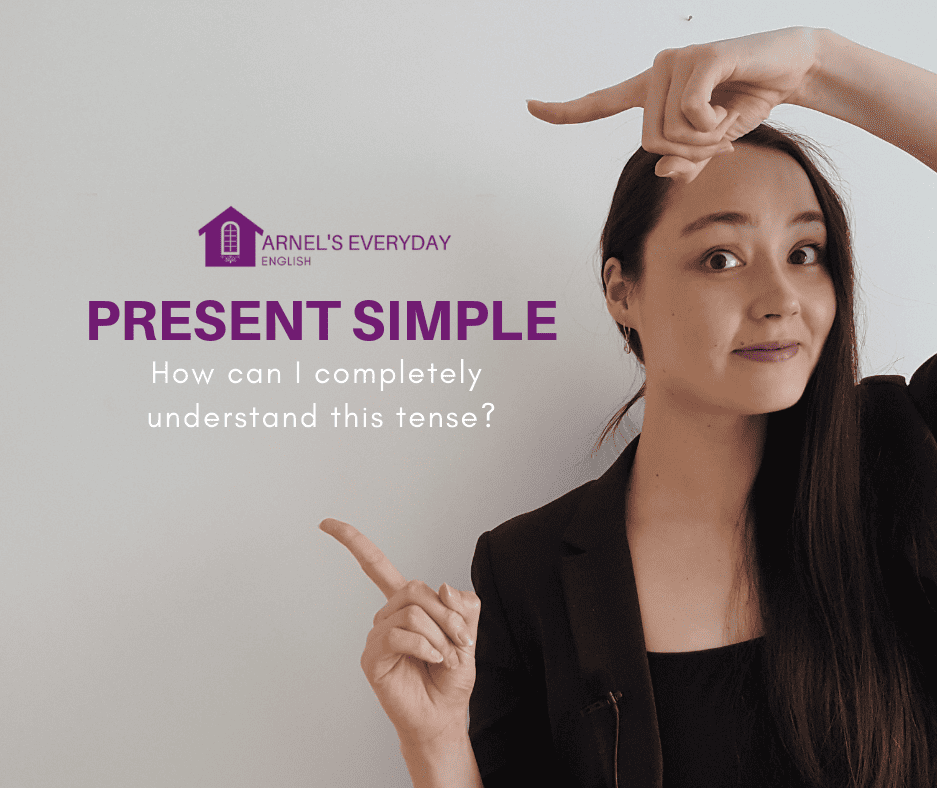The present simple is used in several different ways.
Let’s take a look in 3 steps:
- habits
- things that never change (states / feelings)
- a future timetabled event
The present simple uses the infinitive. The infinitive is verb 1.
- verb 1 eat ←
- verb 2 ate
- verb 3 eaten
- verb 1 dance ←
- verb 2 danced
- verb 3 danced
Remember, to change the infinitive for the 3rd person singular:
I eat
You eat
He/She/It eats ←
We eat
They eat
I have
You have
He/She/It has ←
We have
They have
However! If you are forming a negative or question, use do/does (not) + infinitive.
Positive: I speak French fluently.
Negative: I do not speak French fluently. I don’t speak French fluently.
Negative 3rd person: She does not speak French fluently. She doesn’t speak French fluently.
She does not speaks French fluently.
Question: Do you speak French fluently?
Question 3rd person: Does Jason speak French fluently?
Does Jason speaks French fluently?
#1 habits
Use the present simple for things you normally do or things that normally happen.
I wake up at 8 AM every morning.
(I normally do this.)
Whenever I go to a coffee shop, I order a cappuccino.
(I normally do this.)
I need to wear a tie to work.
(This is mandatory every day.)
My family and I go to Poland every summer.
(We normally do this.)
Most families in England eat dinner around 6 PM.
(People normally do this.)
#2 things that never change
Use the present simple for situations that never change – states / feelings
I am American.
(This doesn’t change.)
The sun rises in the east and sets in the west.
(This doesn’t change.)
The capital of Brazil is Brasilia.
(This doesn’t change.)
*Of course things can always change. Maybe in the future you change your nationality, or a country changes its capital city. But generally, these things will always remain the same.
I really want a pet dog.
(This is a feeling.)
People think it’s strange, but I actually love the rain.
(This is a feeling.)
Don’t you hate it when people speak on their mobile phones super loudly?
(This is a feeling.)
COMMON MISTAKES
Don’t use the present simple for temporary actions:
I will be there in 5 minutes. I walk there now.
☑ I will be there in 5 minutes. I am walking there now.
However! Stative verbs are normally used in the present simple, even if they are temporary:
I am needing a coffee right now.
☑ I need a coffee right now.
#3 a future timetabled event
Use the present simple for future events that have a specific time. You cannot change this time.
My flights leaves at 7 AM tomorrow.
(This is a timetabled event. I cannot change this time.)
When does the football match start?
(This is a timetabled event. I cannot change this time.)
I start university in September.
(This is a timetabled event. I cannot change this time.)
If you are speaking about a future arrangement (something that YOU organise) use the present continuous.
☑ I‘m meeting Jane tonight at 6 PM.
I meet Jane tonight at 6 PM.
How can I use the PRESENT CONTINUOUS correctly?
If you’d like examples, exercises and explanations for all 12 tenses in English, you can purchase my 61-page info pack. CLICK the image below.

CLICK the image









Thank you very much for this lesson, even though I have seen it several times, it is always useful to remind it.
Wonderful Jenny! I’m so glad you found the review helpful!